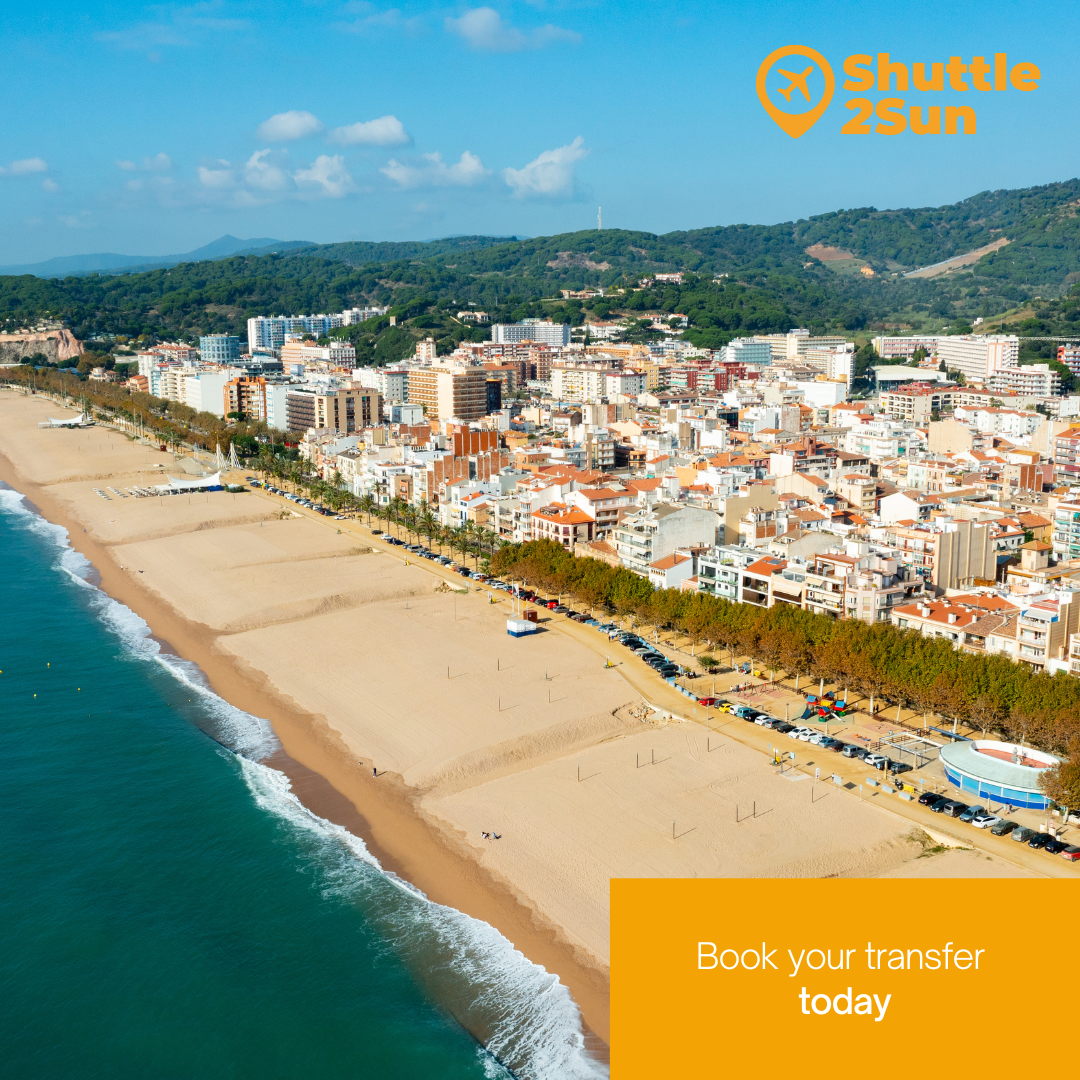On Costa del Maresme, some 50 kilometres from Barcelona and the same distance from Girona, is the tourist town of Calella, or Calella de la Costa, also known as the little corner of Maresme. With an excellent offer of sun and beach, as well as gastronomy, shopping and nightlife, it is an ideal option for a weekend getaway or a few days in this town on the Catalan coast. Not to be confused with Calella de Palafrugell, located on Costa Brava.
We suggest you visit Calella this September, and that’s why we’ll tell you everything you need to know before arriving at your destination. Moreover, with Shuttle2Sun‘s shared transfer services and private transfer services, low-cost and sustainable, you can move to this town, comfortably and without worries, from Barcelona airport, Barcelona port, Reus airport, Girona airport and the AVE Camp de Tarragona train station.
Calella of Germans
The origins of Calella as a settlement date back to Roman times. The first remains of the municipality correspond to the Roman villa of Roser, from the 1st century B.C. Many years later, in the 12th century, a will documented, for the first time, the town of Calella, in writing; and, from 1327, it already had a market.
Its influence in overseas trade and the textile industry grew throughout the Modern Age, favouring urban growth.
From 1970 onwards, Central European tourism, specifically of German, Dutch, Danish, English and French origin, saw Calella as an interesting summer tourist destination, finally becoming the Calella of Germans until the mid-1990s. Especially during the summer months, coinciding with the end of spring and until the beginning of autumn, the town tripled its population.
In this sense, from the 7th to 21st of October, the Oktoberfest is celebrated, a German festival that has become part of Calella’s calendar.
Nowadays, this town has established itself as the tourism capital of Costa del Maresme, thanks to its wide range of tourist attractions, its year-round activities and its magnificent Mediterranean climate.

Calella lighthouse
The lighthouse of Calella is the most characteristic and symbolic element of the municipality. In the past, a watchtower and defence tower was built on this spot to watch out for possible pirate attacks. The current lighthouse was built in 1856, using pressurised oil until 1927, when it was electrified, and the optical apparatus was replaced.
Moreover, this space, which also has a viewpoint, is an ideal spot to enjoy the magnificent views of the coastline and the town of Calella throughout the day, and especially at sunset.
Les Torretes
On the hill of La Patrona you can see two towers, known as Les Torretes de Calella. They are two optical telegraphy towers, one of them for military use, built in 1848, and the other, dating from 1857, for civilian use. Their use was brief, due to the arrival of the railway and the electric telegraph, which modernised communications from 1862 onwards, leaving both towers inoperative.
Remember that with Shuttle2Sun‘s shared transfer services and private transfer services, low-cost and sustainable, you can move to Calella from Barcelona airport, Barcelona port, Reus airport, Girona airport and the AVE Camp de Tarragona train station.

Its beaches
Calella has three beaches that make up its coastline. The longest of them all, 1,500 metres long and up to 72 metres wide, is the Beach Gran, located very close to Passeig Manuel Puigvert. It also has an area set aside for users with dogs, so that they can also enjoy the sand and the sea.
Secondly, the Beach of Garbí is located in front of the hotel zone and is 814 metres long. This urban beach has been awarded the Blue Flag since 1994 and the ‘Q’ for Quality since 2004, both of which highlight the excellent quality of the water and the services offered to users.
Finally, the Beach of ‘Les Roques’, which is located near the lighthouse and is made up of small coves of great natural beauty: Rocapins, la Vinyeta, Cala d’en Pere (nudist beach) and Roca Grossa. In total, they make up an extension of up to 750 metres.
Its beaches also have sports areas for beach football, basketball, beach volleyball and climbing, as well as public services adapted for people with reduced mobility.
Promenade with sea views
If you are a nature lover, a great option if you visit Calella is to take the coastal route that goes all the way to Sant Pol de Mar, the nearest town, just 3 km away.
There are also three routes of varying intensity. The Esquirol Route, of low difficulty, about 5 kilometres long. The Corb Marí Route, 5.67 kilometres long and of moderate difficulty. And finally, the Guilla Route, of medium-high difficulty, 8.53 kilometres long.
Dalmau Park
Another space not to be missed during your visit to Calella is the Dalmau Municipal Park, which covers more than 10 hectares and has natural slopes, a grove of trees from the old pine forest called ‘Can Pelayo’, and a geometric design in its gardens and avenues. Its vegetation is mainly made up of Mediterranean species, such as stone pines, holm oaks and shrubs, among others.
Throughout the year, this park is the setting for many cultural and popular events and activities. It also has children’s games, with swings and slides, for the youngest members of the family.
After getting to know all the characteristics of this coastal town, you just must book your transfer to Calella, either from Barcelona airport, Barcelona port, Reus airport, Girona airport or the AVE Camp de Tarragona train station. Thanks to Shuttle2Sun‘s shared transfer services and private transfer services, low-cost and sustainable, you can move, comfortably and quickly, without worries.



